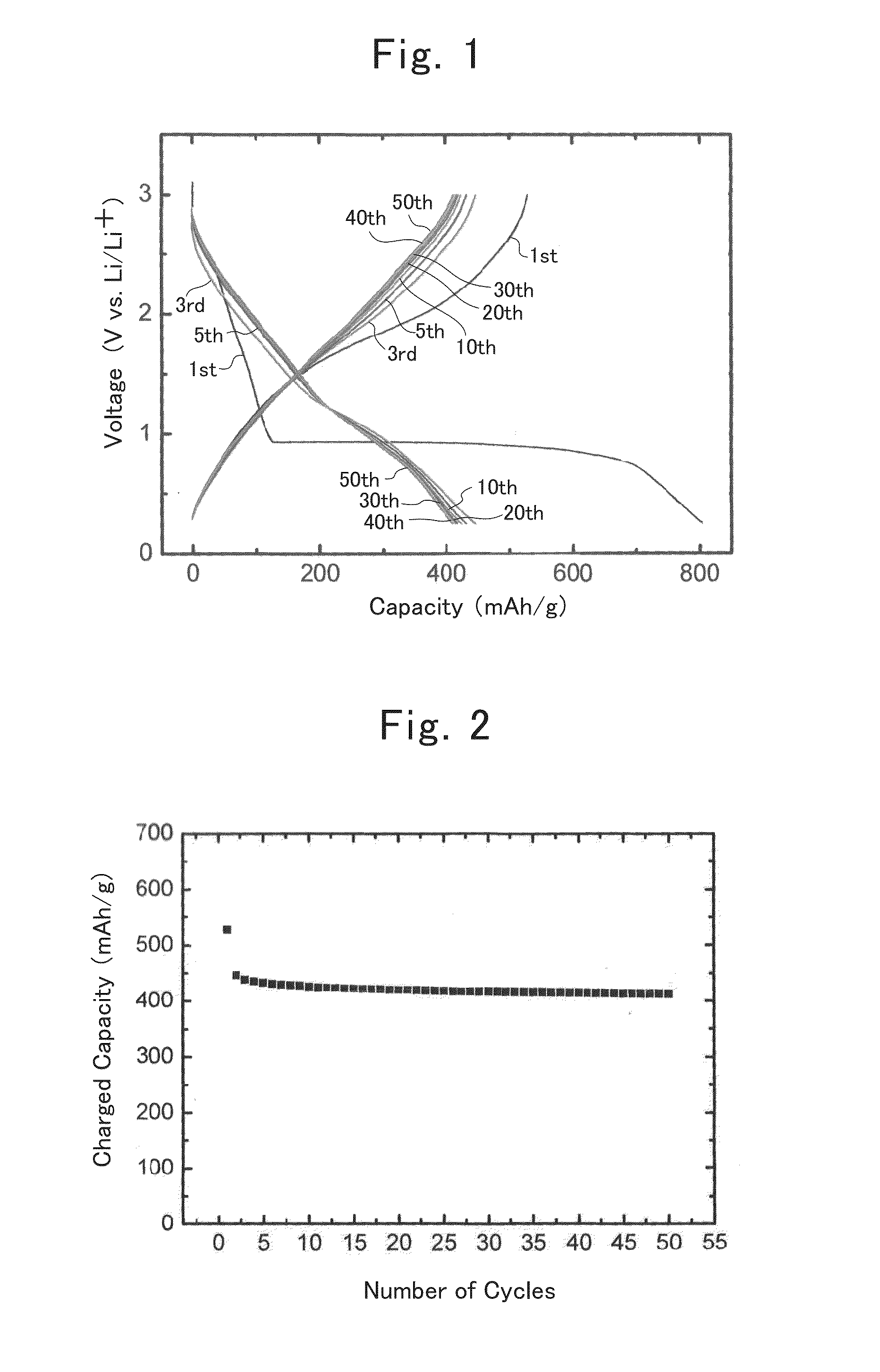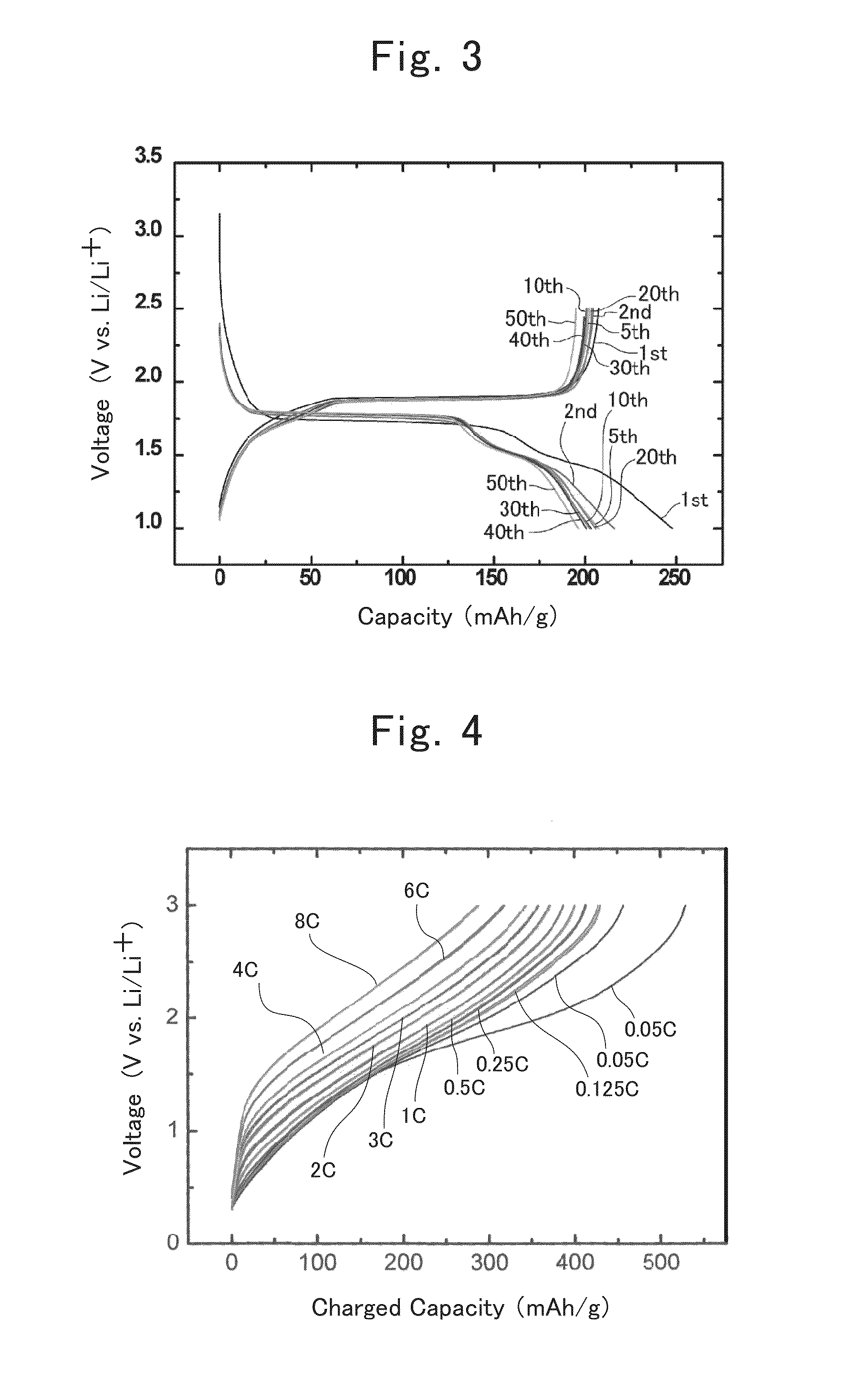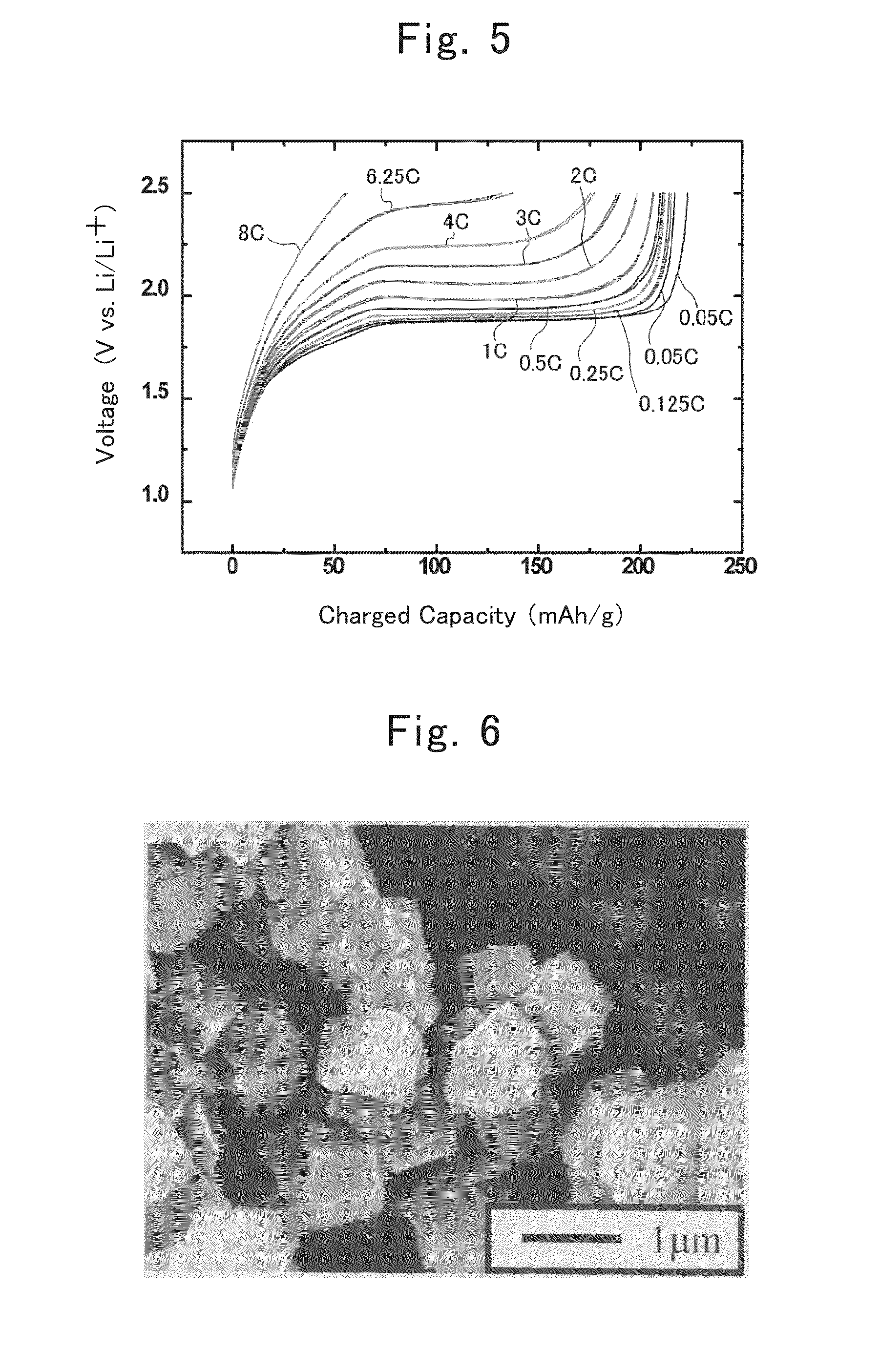Negative-electrode active material for lithium-ion secondary battery and process for producing the same as well as lithium-ion secondary battery and process for manufacturing the same
a technology of negative electrodes and active materials, which is applied in the direction of electrochemical generators, halogen oxides/oxyacids, cell components, etc., can solve the problems of difficult manufacturing of high-capacity and rapidly-charged/dischargeable lithium-ion secondary batteries, and achieves faster speed, higher capacity, and the effect of high capacity
- Summary
- Abstract
- Description
- Claims
- Application Information
AI Technical Summary
Benefits of technology
Problems solved by technology
Method used
Image
Examples
example
Example No. 1
Manufacture of Lithium-ion Secondary Battery
Synthesis of Anatase-type TiO2
[0060]A mixture, in which distilled water, titanium tetrachloride, urea, ammonium sulfate and ethanol had been mixed one another in a ratio of 4:0.99:1:0.01:4 by mass, was stirred in an ice bath for 2 hours.
[0061]The post-stirring mixture was subjected to a hydrothermal treatment at 120° C. for 5 hours. After the hydrothermal treatment, the resulting solid contents were washed with distilled water, and were then dried at 80° C. for 12 hours, thereby obtaining anatase-type TiO2. The obtained anatase-type TiO2 was nanometer-size particles whose average particle diameter was about 30 nm approximately.
Synthesis of Oxidized Titanium Fluoride
[0062]The TiO2 nanometer-size particles being obtained by the above-mentioned step, and a 46%-by-mass HF solution were mixed one another in a ratio of TiO2:HF=1:10 by mol, thereby obtaining a mixed raw material. This mixed raw material was stirred at 80° C. for 24 ...
PUM
 Login to View More
Login to View More Abstract
Description
Claims
Application Information
 Login to View More
Login to View More - R&D
- Intellectual Property
- Life Sciences
- Materials
- Tech Scout
- Unparalleled Data Quality
- Higher Quality Content
- 60% Fewer Hallucinations
Browse by: Latest US Patents, China's latest patents, Technical Efficacy Thesaurus, Application Domain, Technology Topic, Popular Technical Reports.
© 2025 PatSnap. All rights reserved.Legal|Privacy policy|Modern Slavery Act Transparency Statement|Sitemap|About US| Contact US: help@patsnap.com



